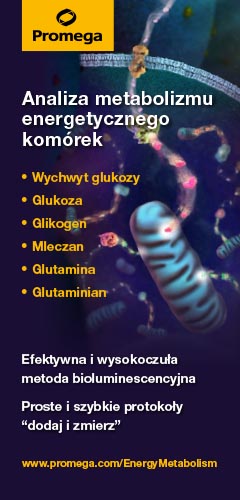The role of MCPIP1 in key elements of the epithelial-mesenchymal transition signaling axis in clear cell renal cell carcinoma
DOI:
https://doi.org/10.18388/pb.2021_594Abstract
Clear cell renal cell carcinoma (ccRCC) is the most common renal tumor with a highly aggressive phenotype and poor prognosis. A key process in tumor progression is epithelial-mesenchymal transition (EMT), as a result of which cells acquire the ability to metastasize. An important inducer of the EMT process is inflammation. A negative regulator of inflammation is the Monocyte Chemoattractant Protein-1 Induced Protein 1 (MCPIP1), which by regulating the immune response may contribute to inhibiting tumor progression. A specific function of the MCPIP1 protein is RNase activity regulating the level of mRNA and miRNA expression. In our studies, we investigated how the MCPIP1 protein affects the EMT process, migratory activity and the level of tumor suppressor genes in clear cell renal cell carcinoma cell lines, tumor tissues of patients and an in vivo xenotransplantation model. We have shown that MCPIP1 regulates the EMT process by preventing cells from acquiring a mesenchymal phenotype. MCPIP1, due to its RNase activity, degrades miRNA-519a-3p, miRNA-519b-3p and miRNA-520c-3p, thereby actively affecting the levels of SFRP4, KREMEN1, ZNRF3, CXXC4 and CSNK1A1 inhibitors and inhibiting the Wnt pathway by inactivating β-catenin and, consequently, inhibiting the EMT process. Furthermore, MCPIP1 regulates the level of Rho proteins, phosphorylation of FAK and Src kinases, and consequently actin remodeling. The obtained results indicate that the lack of MCPIP1 RNase activity activates genes and processes associated with the migratory activity of cancer cells. In summary, the results obtained in this doctoral thesis indicated that MCPIP1 may regulate the progression of clear cell renal cancer at various levels of proangiogenic and prometastatic factors, as well as by influencing the EMT process.
Downloads

Published
Issue
Section
License
Copyright (c) 2025 Judyta Górka, Katarzyna Miękus

This work is licensed under a Creative Commons Attribution 4.0 International License.
All journal contents are distributed under the Creative Commons Attribution-ShareAlike 4.0 International (CC BY-SA 4.0) license. Everybody may use the content following terms: Attribution — You must give appropriate credit, provide a link to the license, and indicate if changes were made, ShareAlike — If you remix, transform, or build upon the material, you must distribute your contributions under the same license as the original. There are no additional restrictions — You may not apply legal terms or technological measures that legally restrict others from doing anything the license permits.
Copyright for all published papers © stays with the authors.
Copyright for the journal: © Polish Biochemical Society.



